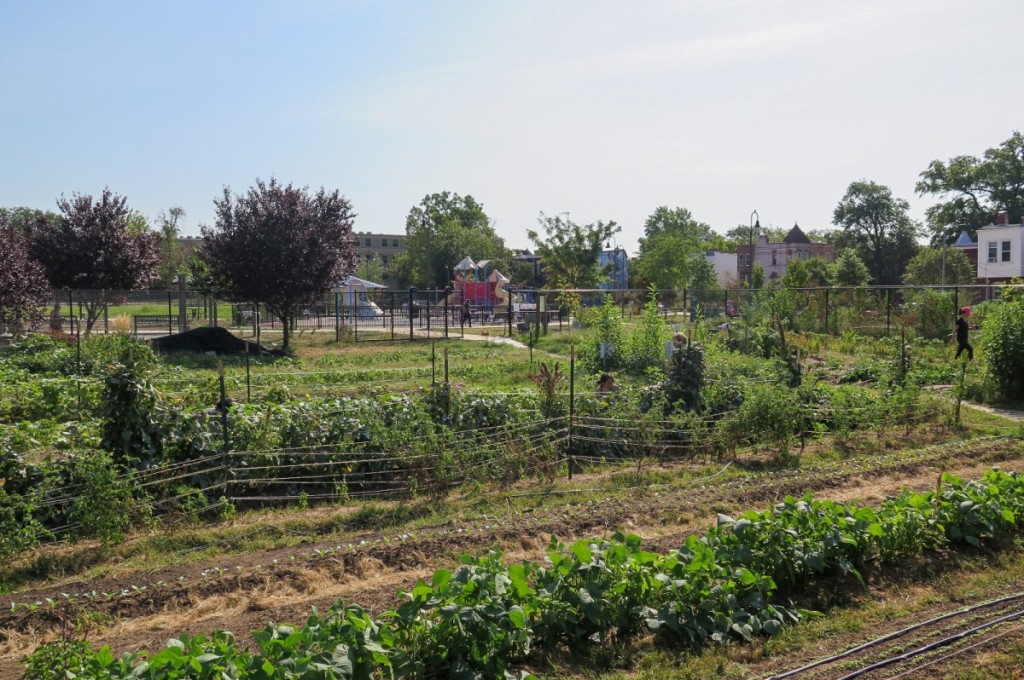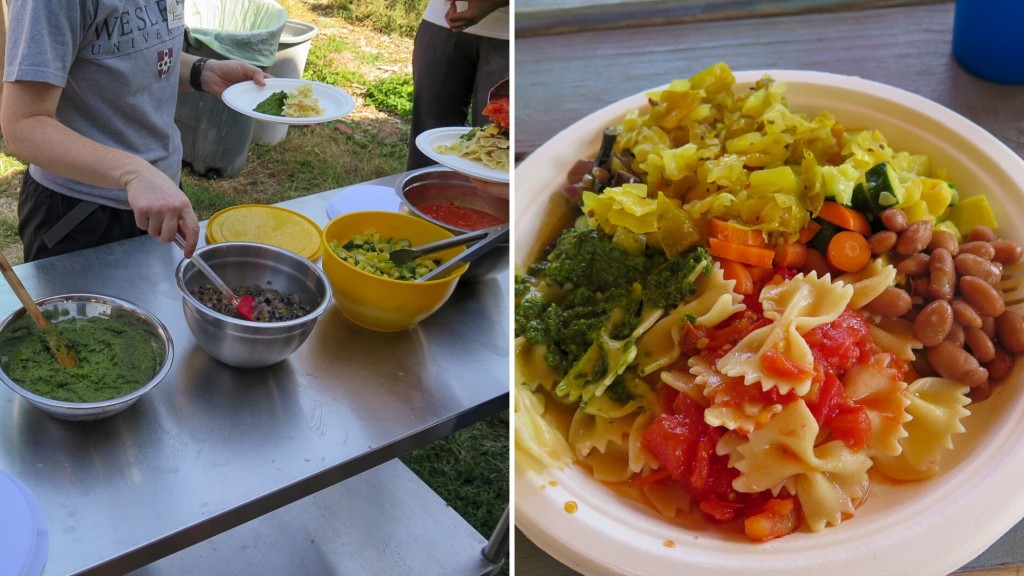Written by Nancy Erickson, Communications Coordinator of the Catalogue for Philanthropy
Over the course of 33 miles, Rock Creek meanders from a spring in Montgomery County, through 9 miles of Rock Creek Park in Washington, DC, and alongside residential and industrial areas until it finally disperses into the Potomac River. In the DC section alone, over 2 million people visit this local treasure every year. Rock Creek Conservancy is the only nonprofit solely dedicated to its preservation through their people-powered efforts. Every year, over 5,000 volunteers join in to restore Rock Creek, and on National Public Lands Day (NPLD), I was honored to be one of them.
Led by the National Environmental Education Foundation (NEEF), this national restoration event takes place every year on the last Saturday of September. On this day, volunteers across the country come out to celebrate our public lands through public service. Earlier this year, Rock Creek Conservancy’s event in Rock Creek Park was honored as the 2019 signature site!
It was an exemplary autumn morning in Rock Creek Park — clear and crisp. As I approached the welcome tents, I was impressed by the scale of the event. There were not only sign-in sheets for volunteers, but also members of the media! Tables were lined with free t-shirts, water bottles, sunglasses, pastries, and coffee! There was even a mascot walking around! …of what appeared to be a bison dressed as a doctor? (It was later explained to me that he was promoting doctors prescribing nature to patients, an intriguing and promising idea.)
After listening to some enthusiastic speeches from the event sponsors, we split into color groups to begin our tasks for the day.
Volunteers had been given 5 choices of work projects, each associated with a different color:
- Red: Invasive Plant Removal at the Trail 9 Mini-Oasis
- Orange: Horse Stables & Maintenance Yard
- Yellow: Weed Warrior Walk
- Green: Trash Trek
- Blue: Nature Center Rail Repair and Restoration
I had chosen blue. My group of fellow blue wrist-band-wearers convened. While other groups left the area to do work around the park, Team Blue stayed put to provide service for the Nature Center and Planetarium. We could choose to do one of three tasks: railings, bee hotels, or invasive plant removal. I joined the railing crew. The Nature Center is wheelchair-accessible, but the railings around the back were in disrepair and peeling. We used sand paper and bristles to scrape off the flaking paint chips — but not before laying down plastic tarp of course, since losing paint chips into the woods would have obviously undermined the spirit of protecting our public lands.
After making the railing acceptably smooth, we then spray-painted the railings with a new shiny glossy coat. We held up pieces of cardboard while spraying to make sure that we didn’t paint passersby or plants. Although the pre-event informational email had clearly instructed us to wear long sleeves, I had rolled up my sleeves, thus defeating the purpose. It wasn’t until the end of the day that I realized that I had accidentally spray-painted my arms in black paint speckle. Whoops.
After finishing the railing, I joined the bee hotel group. What’s a “bee hotel,” you may ask? It’s a collection of bamboo shoots just the right size for a bee to get cozy in, specifically for the bee species which are more solitary than the type we usually think of. These hotels are part of the park’s effort to combat bee extinction, a troubling recent phenomenon which can potentially have devastating effects on our planet’s ecosystem.
My task was to brush out the bamboo’s inner dust with a combination of shaking and using a smaller bamboo stick. *Cough cough*. Fortunately, I didn’t disturb any creepy crawlies that might have been hiding inside.
Then, I passed on the cleared-out shoots to the volunteer team doing a deep clean with vinegar and then gluing them down in the house frames. Earlier we had learned the importance of securing the bamboo, since even a slight tilt would send them rolling everywhere with a delightfully hollow cacophony of clinks.
After a couple of hours, we had constructed two bee hotels and finished refurbishing all of the railings! Our Rock Creek Conservancy team leader Scott thanked us for our hard work in contributing to NPLD and we dispersed. As we returned to the front side of the center, we were rewarded by free catered lunches, a live DJ, and a voucher for free entry into any national park. As mentioned before, this was not a typical volunteer experience!
Over 175 volunteers showed up to support Rock Creek Park that day. Nationwide, over 150,000 volunteers participated at 1,000 sites! It was exciting to be a small part of a much larger communal effort, which was highlighted in this video.
You don’t have to wait until next year’s National Public Lands Day to volunteer with Rock Creek Conservancy! Most volunteer experiences with them don’t include free swag, but they do include making friends and making a difference:
- Throughout the week you can find volunteer events to sign up for. These don’t require any training or long-term commitment. Just register and show up ready to help out!
- If you’d like to make a recurring commitment, you can become a Stream Team leader, by “adopting” a segment of Rock Creek that you maintain together with friends, family, and neighbors.
- Weed Warriors are recurring volunteers that help stem the growth (pun intended) of invasive, non-native plants. The next training takes place on November 23rd.
- If your company would like to host a team-building exercise that gives back to your local community, then reach out to Rock Creek Conservancy staff about creating a custom group volunteer opportunity.
- In the spring, they host the Rock Creek Extreme Cleanup, picking up trash along Rock Creek at over 70 locations. Mark your calendars now!
In a time of dwindling park financing, Rock Creek Conservancy staff work hard to create volunteer opportunities so that everyone in the DC region can enjoy local nature. These are especially well-suited for those with intellectually intense jobs whose impact feels removed and abstract. Volunteering with Rock Creek Conservancy is rewarding, invigorating work where you can immediately witness the difference you’ve accomplished. Volunteering to protect the Rock Creek watershed and urban wilderness feels good and does good.





















